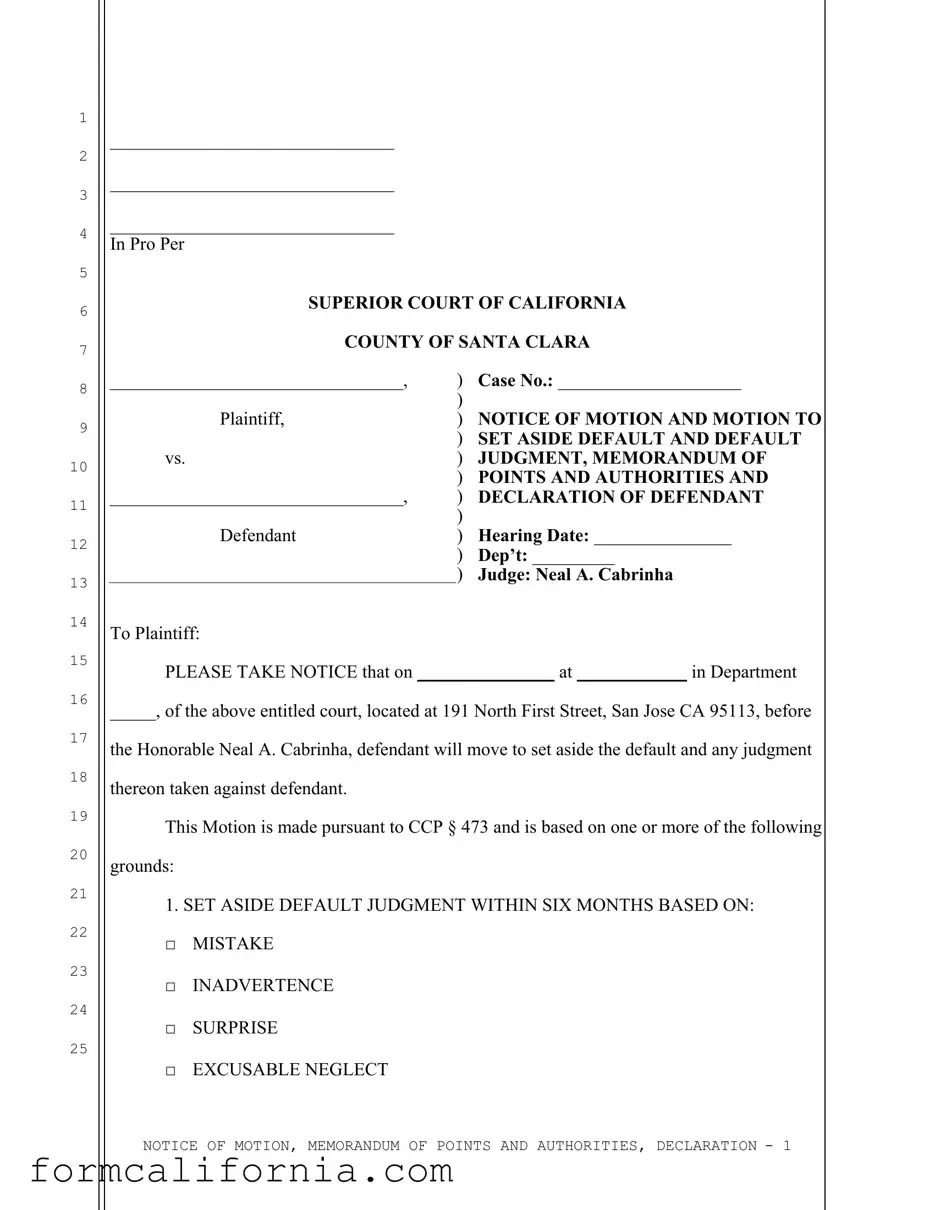This Motion is based on the Memorandum of Points and Authorities and the Declaration of
________________________ which follow, and on all of the pleadings, records, and files in this
action.
Dated:
By:
In Pro Per
MEMORANDUM OF POINTS AND AUTHORITIES
Code of Civil Procedure Section 473 (b) states in relevant part:
The court may, upon any terms as may be just, relieve a party of his or her legal representative from a judgment, dismissal, order, or other proceeding taken against him taken against him or her through his or her mistake, inadvertence, surprise or excusable neglect. Application for this relief shall be accompanied by a copy of the answer or other pleading proposed to be filed therein, . . .
and shall be made within a reasonable time, in no case exceeding six months, after the judgment, order or proceeding was taken.
In the present case, defendant did not file a timely response to the complaint for the
reasons stated in the attached declaration. The policy of the law is to have every case tried on its
merits and that policy views with disfavor a party who, regardless of the merits, attempts to take
advantage of the mistake, inadvertence, or neglect of his adversary. This policy is so strong that
“any doubts in applying section 473 must be resolved in favor of the party seeking relief from
default.” Elston v. City of Turlock (1985) 38 Cal.3d 227, 233; Slusher v. Durrer (1977) 69 Cal.
App. 3d 747, 753.
For the reasons stated in this Memorandum and in the attached Declaration, the
court should set aside the default and any judgment thereon taken against defendant.
NOTICE OF MOTION, MEMORANDUM OF POINTS AND AUTHORITIES, DECLARATION - 2



